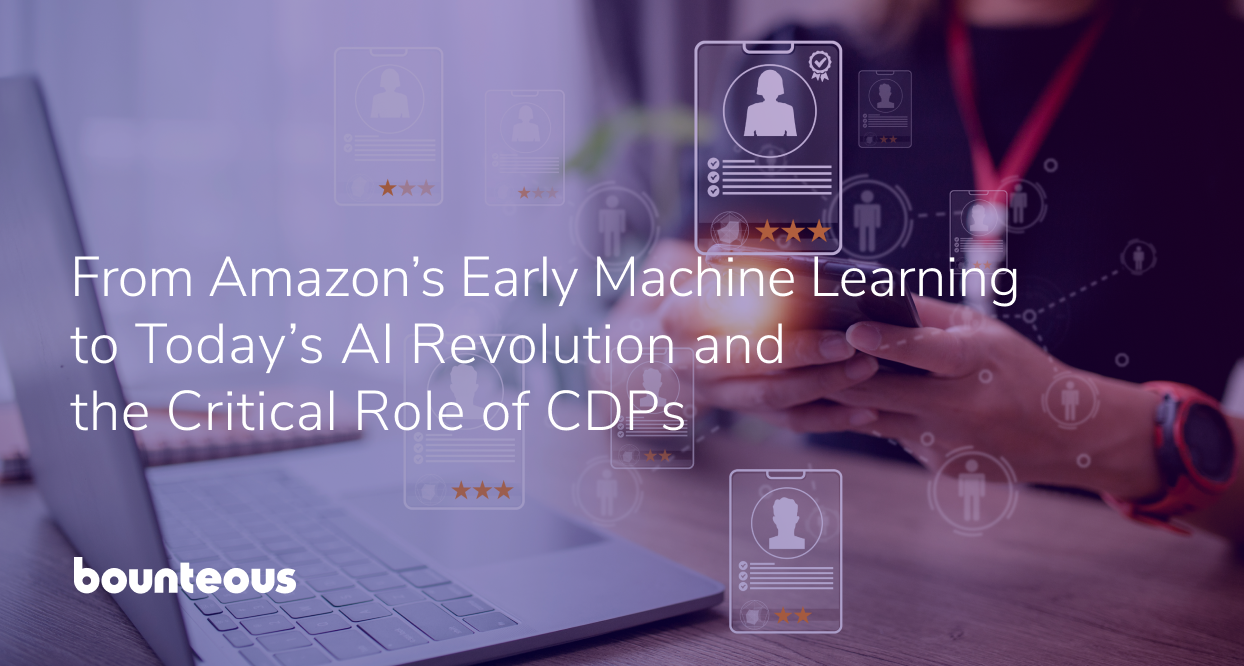Steering AI Adoption: Establishing an Internal Center of Excellence

In November 2022, a seismic shift occurred in the world of artificial intelligence (AI) with the advent of Generative AI (GenAI). This milestone ushered in a new era, one that promises to reshape not only our jobs, personal lives, and education but also the very essence of how businesses operate. GenAI isn't just a passing trend; it's an irreversible transformation that has profound implications for every facet of our society. As AI firmly embeds itself in our daily lives, it is imperative for companies and organizations to proactively adapt and harness its potential. One pivotal step in this transformative journey is the establishment of an AI Center of Excellence, or COE.
Why Do Organizations Need a Center of Excellence?
A Center of Excellence is a multi-disciplined group of individuals across an organization. From leadership to marketing to information technology (IT) to legal, a team meets regularly to address the organization's needs. The AI Center of Excellence, or AI COE, is no different.
While many companies are trying to accommodate AI adoption and governance with existing teams or an existing Center of Excellence, this may not be enough to take full advantage of the AI capabilities. AI is one of the fastest-moving technologies in recent history and has a broad and significant impact on all areas of a business, that most COEs may not be prepared to support.
Too often, we’ve talked to companies that have tried to align AI fully within an existing Marketing or IT organization, where quick successes or early test cases have been identified. While this bottoms-up approach may help speed up the process, failure to align AI with the company objectives will result in missed opportunities for adoption, confusion over guidelines and best practices, and often disjointed or less successful projects. Establishing an AI COE allows companies the coverage they need to stay abreast of the evolving landscape, the focus to prioritize key decisions, and the resources to get initiatives launched.
The core functions of the COE should include, but are not limited to:
- Research & Industry Monitoring
- Education & Knowledge Sharing
- Experimentation & Collaboration Facilitation
- Governance & Change Management
- Strategic Guidance
- Vendor Evaluations
- Standards and Standardization
That is an extensive list of topics to cover and manage by the COE. Some will take on more value than others, depending on an organization’s needs and maturity around AI today. The likelihood that anyone on the COE would be dedicated will vary by organization. For many organizations, participation in a COE will be an additional responsibility for those participating. Executive alignment is required around the time and effort required for participants to engage in the COE meaningfully and do the work that is asked.
Building an AI COE: The First Steps
The initial phase in crafting an AI COE revolves around assembling the right team of visionaries. Seek out individuals who possess a profound interest in AI and are ready to commit their time and energy to this transformative initiative. Pair these team members with change agents in the organization who have experience supporting and measuring innovation initiatives. The size of the team can vary depending on an organization's unique needs, but consider forming a team comprising no fewer than six and no more than 15 members.
Here's what to consider when forming an AI COE dream team:
A dedicated leader
An AI COE requires a dedicated leader who can steer the ship and maintain unwavering focus on the goals. This leader need not be an AI expert, but should comprehend the significance of AI within the organization, both internally and externally.
A cross-functional team
An AI COE should include individuals from different departments across an organization. Examples may include IT, analytics, data science, marketing, legal, human resources, executive leadership. This diverse mix ensures a rich tapestry of perspectives and innovative ideas.
Subject matter experts
Consider including experts who have experience with AI and related technologies. These individuals could be data scientists, developers, marketers, user experience designers and other relevant experts.
Once the team is in place, it's time to set sights on defining the COE's goals and objectives. What does the AI COE aim to accomplish? What pressing challenges is it poised to address? Objectives may span from articulating a company's overarching AI strategy to exploring revenue-generating AI ventures or time-bound AI-driven milestones. Answering these pivotal questions will pave the way for a roadmap guiding an organization's journey into the realm of AI adoption and expansion.
With objectives outlined, the next step to success involves crafting an actionable plan. This plan should meticulously detail how to keep tabs on industry trends, educate teams and the wider organization on AI, conduct experiments with AI technologies, administer AI governance, evaluate vendors, and standardize AI practices.
One of the most critical aspects for an AI COE is governance. Establishing clear guidelines for AI usage within an organization is paramount, both to encourage adoption as well as safeguarding against legal and ethical issues. This will ensure that AI is used responsibly across the organization, paving the way for the deployment of solutions to workforce or early adoption groups.
Finally, this group needs to have a clear focus on success measurement. This means setting KPIs or key performance indicators that are tied to the goals and objectives of the Charter. By measuring your progress, you can identify areas where you need to improve and adjust your approach accordingly.
Top Priorities for an AI COE
Once a Center of Excellence is established, as well as the leader, a team, and the goals of the COE, it is time to get to work. While the scope of this group has the potential to expand rapidly, try to align on a plan of action. Consider the following suggestions on where to start.
Inventory of all use of AI currently
The likelihood that a company is already using some form of AI is high. While GenAI is the hot new term, AI has been around for awhile, and this COE needs to address the broad term of AI, not just GenAI. Create an inventory of the tools in use, and the processes that are currently in place.
Communicate the purpose of the COE
Communicate the establishment of the COE far and wide through several internal channels. Consider presenting the Charter, the inventory of existing solutions and tools, and how to communicate with the COE at internal team meetings, user groups, or town halls. This will avoid duplicative projects and spending money on tools that may already exist in other parts of the organization. Emphasize that AI should not be explored in a silo. This establishes that the company is thinking about AI in a meaningful way and open channels of communication.
Identify use cases the COE should address
Have the COE start to identify and document existing and new use cases for using AI and GenAI. Again, they may already have AI in action, but more likely than not, there are opportunities to deploy GenAI more meaningfully. Build use cases for teams to identify opportunities for cost mitigation, investment for increased productivity, and upskilling teams.
Establish a way to monitor and communicate trends and AI developments
From newsletters to podcasts to general news filters, there is a wealth of information created every week that will help companies stay informed. This field is moving so fast, with exponential growth happening every month. It is hard to keep up with it all, but companies need to try. Inevitably, there will come a time when AI directly impacts every company.
Build an education curriculum
Whether it is from external sources like LinkedIn Learning, or building internal documentation, it is critical that organizations offer educational resources for their company to learn about the pros/cons/impacts of AI. This curriculum should also consider AI ethics, using company data appropriately with AI tools, how data should be shared with third-party tools, and more.
Creating and including a repository of ways current teams are using AI/GenAI will also be helpful for greater understanding of the tools that exist, but also a chance to highlight the successful pilots or processes that others can learn from. The more an organization can educate their teams about AI, the smarter they will be about how they use it and the impact they will have on a company.
Establish and communicate AI guidelines and standards
Companies should have an established set of standards or policies around the use of AI, establishing some basics such as privacy, use of company data with GenAI platforms like ChatGPT, use of generated content (images, text, video, audio) and how to get permission to use tools as part of one’s job. Thinking more broadly, consider “The Responsible AI Manifesto for Marketing and Business” from the Marketing Artificial Intelligence Institute as a place to start establishing a set of AI principles that can guide conversations around how AI can and should be used.
In today's fast-paced business landscape, the AI and GenAI revolution is already in full swing. It's no longer a question of 'if' but 'when' AI tools will become an integral part of an organization. With the ever-present risk of employees adopting GenAI tools without proper oversight, the stakes are higher than ever. Protecting company data, ensuring responsible AI usage, and multiplying the benefit of AI is paramount. The solution? Embrace the future with an AI Center of Excellence.
By assembling a dynamic, cross-functional team, charting clear objectives, devising an actionable plan, instituting robust governance, and diligently tracking progress, companies are not just keeping up; they are leading the charge towards ethical and responsible AI adoption. Seize this opportunity to harness AI's transformative potential and stay ahead in the race for innovation and success.


